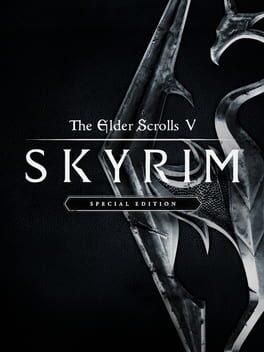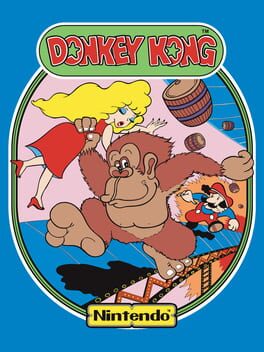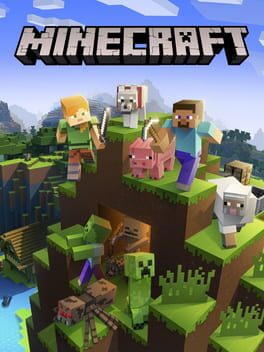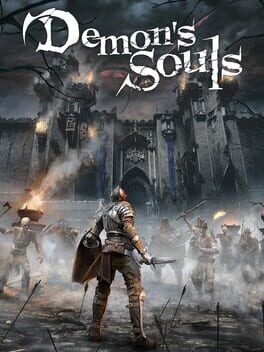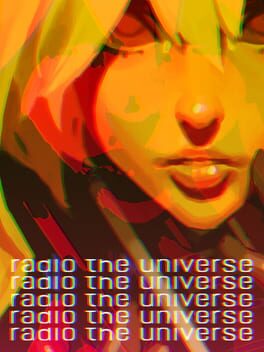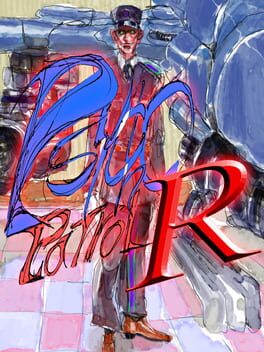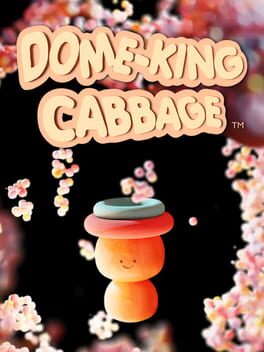Fulufu
20 reviews liked by Fulufu
Resident Evil 4 VR
2021
I used to be a lore guy.
I used to get so caught up in the specifics of details interlocking and having causal relationships to each other. Skyrim has none of that. Instead it has vibes. It's all vibes. When I was younger I tried to dig too deep and was resentful of what wasn't there. I'd kit it out with a billion mods and try to make it something it wasn't. Some games that could loosely be thrown in the same genre - New Vegas, Disco Elysium, Baldur's Gate, are novels with added dimension. Their art is text; the game around them is just their interface. In this realm, Skyrim cannot compare. But why would it? It's not literature, it's a virtual diorama. It's a gorgeous landscape accompanied by the beautiful soundtrack of Soule that, somehow, no matter the angle, is always serene and mystical.
I convinced myself I despised it, yet every few years I boot it up and go for a lovely little stroll around a familiar old countryside. There's a reason this has become such a totemic piece of culture.
I used to get so caught up in the specifics of details interlocking and having causal relationships to each other. Skyrim has none of that. Instead it has vibes. It's all vibes. When I was younger I tried to dig too deep and was resentful of what wasn't there. I'd kit it out with a billion mods and try to make it something it wasn't. Some games that could loosely be thrown in the same genre - New Vegas, Disco Elysium, Baldur's Gate, are novels with added dimension. Their art is text; the game around them is just their interface. In this realm, Skyrim cannot compare. But why would it? It's not literature, it's a virtual diorama. It's a gorgeous landscape accompanied by the beautiful soundtrack of Soule that, somehow, no matter the angle, is always serene and mystical.
I convinced myself I despised it, yet every few years I boot it up and go for a lovely little stroll around a familiar old countryside. There's a reason this has become such a totemic piece of culture.
Fortnite
2017
Donkey Kong
1981
Even people who enjoy playing old games can be guilty of looking at them patronizingly, like they’re just cave paintings that formed the basis of the renaissance art which deserves the real analysis. However, as a programmer and a games analyst, I wanted to highlight the amount of work that went into designing these seemingly primitive games, and what better way is there to do so than looking at decompiled source code. Specifically, this will be the code at the heart of Donkey Kong’s difficulty: the movement of the barrels.
If you haven’t played Donkey Kong before, you might be wondering what makes barrels rolling down slopes so difficult. They all go at the same speed, they’re the same size, and there isn’t a restrictive timer that forces you into hasty mistakes. However, sometimes they go straight down the ladders between each of the slopes, and this is what makes the game so tricky. Ladders are incredibly useful, letting you quickly reach the next level and reliably dodge barrels underneath you, but the slow climbing speed and potential for getting hit by a falling barrel leads to a lot of quick decision making at each ladder. At first, it may seem like the falling is entirely random, but here’s the exact logic of how it works:
(Decompiled and commented by Don Hodges. If you've never seen Assembly code before, yes, it really is this nightmarish)
2178 3A4863 LD A,(#6348) ; get status of the oil can fire
217B A7 AND A ; is the fire lit ?
217C CAB221 JP Z,#21B2 ; no, always take ladders before oil is lit
217F 3A0562 LD A,(#6205) ; else load A with Mario's Y position + 5
2182 D604 SUB #04 ; subtract 4
2184 BA CP D ; is the barrel already below or same level as Mario ?
2185 D8 RET C ; yes, return without taking ladder
2186 3A8063 LD A,(#6380) ; else load A with difficulty from 1 to 5.
2189 1F RRA ; divide by 2, result can be 0, 1, or 2
218A 3C INC A ; increment. result is now 1, 2, or 3
218B 47 LD B,A ; store into B
218C 3A1860 LD A,(#6018) ; load A with random timer
218F 4F LD C,A ; store into C for later use
2190 E603 AND #03 ; mask bits. result now random number between 0 and 3
2192 B8 CP B ; is it greater than modified difficulty?
2193 D0 RET NC ; yes, return without taking ladder
2194 211060 LD HL,#6010 ; else load HL with player input.
2197 3A0362 LD A,(#6203) ; load A with Mario's X position
219A BB CP E ; compare with barrel's X position
219B CAB221 JP Z,#21B2 ; if equal, then go down ladder
219E D2A921 JP NC,#21A9 ; if barrel is to right of Mario, check for moving to left
21A1 CB46 BIT 0,(HL) ; else is Mario trying to move right ?
21A3 CAAE21 JP Z,#21AE ; no, skip ahead
21A6 C3B221 JP #21B2 ; yes, make barrel take ladder
21A9 CB4E BIT 1,(HL) ; is Mario trying to move left ?
21AB C2B221 JP NZ,#21B2 ; yes, make barrel take ladder
21AE 79 LD A,C ; else load A with random timer computed above
21AF E618 AND #18 ; mask with #18. 25% chance of being zero
21B1 C0 RET NZ ; if not zero, return without taking ladder
21B2 DD3407 INC (IX+#07) ; else increase barrel animation
21B5 DDCB02C6 SET 0,(IX+#02) ; set barrel to take the ladder
21B9 C9 RET ; return
The line that may stand out is the “load A with difficulty 1 to 5” command, when the game never explicitly states a difficulty level. This is a value hidden from the player that simply increments every thirty-three seconds, or when the player reaches a new level number that’s higher than the difficulty value. To oversimplify the minutiae of the exact math, this is used for comparison with a random number between zero and three to decide if the barrel goes down the ladder. For the player, this means that on the lowest difficulty (the first thirty-three seconds of level one), barrels go down the ladder 25% of the time, but this increases by 25% either when thirty-three more seconds pass or the player goes to the next level before such an increase, until it reaches a maximum of 75%. However, there are two cases where barrels will always choose to use the ladder, either when Mario is directly underneath the barrel, or when Mario is actively moving towards a barrel that's going the same way.
So, the question now is why Nintendo bothered to put so much detail into something people could easily dismiss as token-taking randomness. The reason is a concept that anyone who does a lot of cooking understands well: that just because something can’t be consciously detected, doesn’t mean it’s irrelevant to the experience. The best example might be how barrels moving in the same direction you’re walking towards will always go down the ladder. That might not be a rule you’re directly conscious of, but it ensures that thoughtlessly walking towards a ladder will always result in punishment. Similarly, barrels always dropping on top of you if you’re on the ladder itself forces you to be mindful of where you stand, and not use them as a safe zone. Players begin to understand these mechanics implicitly, and this mix of reliability and randomness creates difficulty in a way that makes the game more tense even without a change in the player’s control. Consider the alternative methods of raising the difficulty: boosting the speed of the barrels would make them harder to react to, but easier to jump over, and slower barrels would have the opposite effect, making the difficulty adjustment more of a lateral shift than a direct increase. Throwing more obstacles could lead to cases where barrels clump up and become impossible to jump over, and randomly mixing up fast and slow barrels could cause the same issue.
Despite how this barrel logic is just a small part of the game, considering its implications reveals just how thoughtfully it was designed. Randomness is an easy way to make games harder, but when coupled with the deterministic rules which enforce proper play, players will never fail directly due to the randomness itself. Few games handle randomness and difficulty as cleanly as this, even forty years after the fact. It’s a reminder to take even the oldest, most seemingly primitive games seriously, and that there’s always something left to be learned, especially from the ultimate classics.
If you haven’t played Donkey Kong before, you might be wondering what makes barrels rolling down slopes so difficult. They all go at the same speed, they’re the same size, and there isn’t a restrictive timer that forces you into hasty mistakes. However, sometimes they go straight down the ladders between each of the slopes, and this is what makes the game so tricky. Ladders are incredibly useful, letting you quickly reach the next level and reliably dodge barrels underneath you, but the slow climbing speed and potential for getting hit by a falling barrel leads to a lot of quick decision making at each ladder. At first, it may seem like the falling is entirely random, but here’s the exact logic of how it works:
(Decompiled and commented by Don Hodges. If you've never seen Assembly code before, yes, it really is this nightmarish)
2178 3A4863 LD A,(#6348) ; get status of the oil can fire
217B A7 AND A ; is the fire lit ?
217C CAB221 JP Z,#21B2 ; no, always take ladders before oil is lit
217F 3A0562 LD A,(#6205) ; else load A with Mario's Y position + 5
2182 D604 SUB #04 ; subtract 4
2184 BA CP D ; is the barrel already below or same level as Mario ?
2185 D8 RET C ; yes, return without taking ladder
2186 3A8063 LD A,(#6380) ; else load A with difficulty from 1 to 5.
2189 1F RRA ; divide by 2, result can be 0, 1, or 2
218A 3C INC A ; increment. result is now 1, 2, or 3
218B 47 LD B,A ; store into B
218C 3A1860 LD A,(#6018) ; load A with random timer
218F 4F LD C,A ; store into C for later use
2190 E603 AND #03 ; mask bits. result now random number between 0 and 3
2192 B8 CP B ; is it greater than modified difficulty?
2193 D0 RET NC ; yes, return without taking ladder
2194 211060 LD HL,#6010 ; else load HL with player input.
2197 3A0362 LD A,(#6203) ; load A with Mario's X position
219A BB CP E ; compare with barrel's X position
219B CAB221 JP Z,#21B2 ; if equal, then go down ladder
219E D2A921 JP NC,#21A9 ; if barrel is to right of Mario, check for moving to left
21A1 CB46 BIT 0,(HL) ; else is Mario trying to move right ?
21A3 CAAE21 JP Z,#21AE ; no, skip ahead
21A6 C3B221 JP #21B2 ; yes, make barrel take ladder
21A9 CB4E BIT 1,(HL) ; is Mario trying to move left ?
21AB C2B221 JP NZ,#21B2 ; yes, make barrel take ladder
21AE 79 LD A,C ; else load A with random timer computed above
21AF E618 AND #18 ; mask with #18. 25% chance of being zero
21B1 C0 RET NZ ; if not zero, return without taking ladder
21B2 DD3407 INC (IX+#07) ; else increase barrel animation
21B5 DDCB02C6 SET 0,(IX+#02) ; set barrel to take the ladder
21B9 C9 RET ; return
The line that may stand out is the “load A with difficulty 1 to 5” command, when the game never explicitly states a difficulty level. This is a value hidden from the player that simply increments every thirty-three seconds, or when the player reaches a new level number that’s higher than the difficulty value. To oversimplify the minutiae of the exact math, this is used for comparison with a random number between zero and three to decide if the barrel goes down the ladder. For the player, this means that on the lowest difficulty (the first thirty-three seconds of level one), barrels go down the ladder 25% of the time, but this increases by 25% either when thirty-three more seconds pass or the player goes to the next level before such an increase, until it reaches a maximum of 75%. However, there are two cases where barrels will always choose to use the ladder, either when Mario is directly underneath the barrel, or when Mario is actively moving towards a barrel that's going the same way.
So, the question now is why Nintendo bothered to put so much detail into something people could easily dismiss as token-taking randomness. The reason is a concept that anyone who does a lot of cooking understands well: that just because something can’t be consciously detected, doesn’t mean it’s irrelevant to the experience. The best example might be how barrels moving in the same direction you’re walking towards will always go down the ladder. That might not be a rule you’re directly conscious of, but it ensures that thoughtlessly walking towards a ladder will always result in punishment. Similarly, barrels always dropping on top of you if you’re on the ladder itself forces you to be mindful of where you stand, and not use them as a safe zone. Players begin to understand these mechanics implicitly, and this mix of reliability and randomness creates difficulty in a way that makes the game more tense even without a change in the player’s control. Consider the alternative methods of raising the difficulty: boosting the speed of the barrels would make them harder to react to, but easier to jump over, and slower barrels would have the opposite effect, making the difficulty adjustment more of a lateral shift than a direct increase. Throwing more obstacles could lead to cases where barrels clump up and become impossible to jump over, and randomly mixing up fast and slow barrels could cause the same issue.
Despite how this barrel logic is just a small part of the game, considering its implications reveals just how thoughtfully it was designed. Randomness is an easy way to make games harder, but when coupled with the deterministic rules which enforce proper play, players will never fail directly due to the randomness itself. Few games handle randomness and difficulty as cleanly as this, even forty years after the fact. It’s a reminder to take even the oldest, most seemingly primitive games seriously, and that there’s always something left to be learned, especially from the ultimate classics.
Metal Gear Solid
1998
Important, a classic etc. that nonetheless vacillates wildly between being brilliant and infuriating - it’s a bit of a chore to actually play. The top-down perspective makes the actual 3D space irrelevant for large stretches as the radar does the heavy lifting, though there’s still a tendency to get shot from off-screen, and actually aiming at anything is a nightmare. The characters are all quite badly written, vomiting up their backstories and overexplaining every single moment of subtext ad naseum to Snake’s increasingly hilarious bewilderment, leading to exchanges like: “I’m feeling sad.” “Sad?” “Yes, sad. It’s when the endorphins in your brain don’t fire enough, leading to a lack of energy and motivation.” “I didn’t know your brain controlled your feelings...”
But something that still felt fresh was the Codec, where every one of your contacts says something different every time you walk into a different room, or do something notable - e.g. equipping the cigarettes to get scolded, or repeatedly ringing one until they ignore you. There’s a conscious effort to erase the barrier between gameplay and “story”, which is usually treated as a separate, isolated quality in video game criticism instead of inherent to game-feel. I was impressed with the torture sequence - not only is failure here an option, but it’s the more interesting one, undermining the pastiche of Hollywood action heroics and paying off with a suitably down climactic beat. And while I wasn’t always impressed with the boss fights (especially the gimmicky Psycho Mantis) there’s an admirable sense of experimentation in making them all different. The pacing and build-up to each works well, and there’s some effort to complicate our relationship to them as “enemies”, e.g. Grey Wolf embracing pain. (My favourite was Vulcan Raven and his mini gun, which plays to all the strengths of the stealth gameplay.)
Admirably anti-war in its sentiments, also pretentious, sexist, and with laughable stabs at pathos - though this is, as far as I can tell, Hideo Kojima’s whole deal. Auteurism sometimes demands you take the rough with the smooth.
But something that still felt fresh was the Codec, where every one of your contacts says something different every time you walk into a different room, or do something notable - e.g. equipping the cigarettes to get scolded, or repeatedly ringing one until they ignore you. There’s a conscious effort to erase the barrier between gameplay and “story”, which is usually treated as a separate, isolated quality in video game criticism instead of inherent to game-feel. I was impressed with the torture sequence - not only is failure here an option, but it’s the more interesting one, undermining the pastiche of Hollywood action heroics and paying off with a suitably down climactic beat. And while I wasn’t always impressed with the boss fights (especially the gimmicky Psycho Mantis) there’s an admirable sense of experimentation in making them all different. The pacing and build-up to each works well, and there’s some effort to complicate our relationship to them as “enemies”, e.g. Grey Wolf embracing pain. (My favourite was Vulcan Raven and his mini gun, which plays to all the strengths of the stealth gameplay.)
Admirably anti-war in its sentiments, also pretentious, sexist, and with laughable stabs at pathos - though this is, as far as I can tell, Hideo Kojima’s whole deal. Auteurism sometimes demands you take the rough with the smooth.
This review contains spoilers
extremely surreal to see that a prevalent consensus on this is that it's an OBVIOUS uberbleak nihilist exercise in cynical ultraviolence when I feel like it's Very Clearly shooting for (but emphatically not always flawlessly succeeding at) humanist themes exploring mercy, kinship, and absolution: The last spoken line/thesis of the game is literally "I don't know if I can ever forgive you, but I'd like to try" which basically mirrors the bubbly final sentiment in Steven Universe of all things... like come on people the game clearly has a lot of faith in human compassion and optimism that we can be (and are) better than our worst impulses. We can (and should!) totally debate the efficacy of the way the game communicates these ideas. I think there are plenty of areas to criticize or outright condemn in terms of execution; the pieces written about the games fraught zionist inspirations and the discomfiting misogynoir on display in regards to a specific moment are especially vital reads--but framing this story's outlook as intentionally nihilist, player-blaming pain porn about the inescapable cycle of violence is just.. totally disingenuous to what it's clearly trying to do, imo. A story about empathy without a soft and tender pastel veneer does not render it ineffective or worthless. I would probably argue that the game's refusal to over-sentimentalize the repugnance of its deuteragonists' actions (or make their realities easily accessible/justifiable) lends more integrity to the challenge of conveying the inherent worth and potential for change within them... I feel like the game makes it extra clear that Abby and Ellie are not universalizing prescriptive ciphers for the human condition / our inescapable URGE 4 VENGEANCE and are instead very specific / detailed character studies of damaged people whose emotional processing is expressed through borderline surrealist New French Extremity interactive dream logic in a world that also presents a variety of individuals with approaches and outlooks that are direct foils to these self-destructive coping strategies!!!
lots and lots of thoughts about this game, might revisit and explore further at some point
(also feel the need to say that Naughty Dog's crunch culture is a blight on the industry and this game could have been just as affecting as a more contained and less needlessly sprawling experience)
lots and lots of thoughts about this game, might revisit and explore further at some point
(also feel the need to say that Naughty Dog's crunch culture is a blight on the industry and this game could have been just as affecting as a more contained and less needlessly sprawling experience)
Undertale
2015
Minecraft
2011
(6-year-old's review, typed by her dad)
I met a goat guy 3 times. He had a long beard and I just felt weird.
[Dad's note: She had her tonsils out the same day TotK came out, so she was in a semi-delirious state when she insisted on reviewing the game. I was very impressed that she still managed to get through a couple shrines on her own!]
I met a goat guy 3 times. He had a long beard and I just felt weird.
[Dad's note: She had her tonsils out the same day TotK came out, so she was in a semi-delirious state when she insisted on reviewing the game. I was very impressed that she still managed to get through a couple shrines on her own!]
Demon's Souls
2020
Demon's Souls (PS5) is quite possibly the worst example of a remake ever. Bluepoint have completely misunderstood the complex emotions, atmosphere and vibe that makes the original such an incredible piece of art.
To understand why Demon’s Souls (PS5) fails as a remake, we need to look at the contexts in which we view souls games. The prevailing discussion around the soulsborne series categorises their sole existence as games that gamers play to show how good they are at games. This culture pushes away the capacity of discussion around the artistic merits of each individual game and instead pushes people to view the games on an entirely mechanical level. Because of this, the original Demon’s Souls is viewed entirely as a proto-souls, where its merits as a work of art are discarded because the only significance it has as a game is that it created the mechanical basis for “better” games.
While I plan to write another essay on why Demon’s Souls (PS3) is one of my favourite artistic statements in gaming later on, I'll summarise here what makes the original so special. Demon's Souls at its core is a game about human greed and power. We arrive into Boletaria after the main events of its downfall have already occurred and are effectively set to roam around the wastes, picking up clues of what happened along the way. To many Souls fans, the lorebuilding may feel comparatively tame in Demon’s Souls but I personally feel it works to its benefit, as the game expects the player to come to their own terms on what led to Boletaria's destruction. Demon's Souls (PS3) uses full advantage of the graphical standards and techniques of the seventh generation to create a dense atmosphere that feels in line with the circumstances of its world. Boletaria is shrouded by deep fog because the demons are killing the inhabitants of Boletaria to harvest their souls to be consumed by an entity named the old one. The old one was awoken by king allant while his kingdom was in prosperity because he felt that the outer kingdoms in the world needed to be put out of their misery, when they were simply impoverished and in need of support. This contextualises the game’s dense (and arguably limited) foggy graphical style as the direct outcome of the atrocities that happen at the expense of the king’s hubris.
Meanwhile, Demon's Souls (PS5) sheds the visual style of the original to create nothing more than a showcase of modern hardware. Where once was a very uniquely grim colour palette of muted oranges, greens and very occasionally blue is now grey with a bright blue filter over literally everything. The nexus in PS3 is gorgeous, the walls are very abundantly textured, the lighting is subdued and golden runes adorn the floors, which I feel excellently conveys the nature of this being a long forgotten temple existing as an ethereal plane. On the other hand, PS5’s nexus just blasts you with beams of blue light coming from the roof of the structure, with the golden runes now being a weird orange LED colour rather than the ornamented look of the original. Areas in the remake massively suffer from having the lights look like RGB gamer lights than actual lights, which makes any area that tries to contrast two colours with each other look much gaudier than it should. Another horrible example of this is the Dragon God fight, where the pure red hellish look completely annihilates the visual distinction that the fight was trying to make with its contemporaries in the original in exchange for a generic western fantasy volcano area aesthetic. I think the only area that looks visually appealing in the entire game is the outside of Stonefang Tunnel, where the dusty oranges work in the favour of the atmosphere of the level although this is extremely brief and is ruined by the game's lighting of bloodstains and messages.
The UI of Demon’s Souls (PS5) is maybe the most indicative of where Bluepoint have gone wrong artistically. PS3's UI and HUD are extremely unique as far as games go. The font is skeuomorphic to the writing that would actually exist in world. It comes off as incredibly charming and it’s something that only the original Dark Souls (bar remastered) has attempted in the series since. In addition, the textured grey bars of the menus fit extremely well with the overall artstyle of the game. even the muted red they picked for the selection bar fits the palette in a very dulcet manner. The hud itself also fits the game perfectly. it's adorned with these strange silver demon signs which feel like they represent the resurrective pact you have been inflicted with. Meanwhile, PS5’s UI and HUD goes for a modernised, minimalist approach. it’s hard for me to even say anything about it without becoming enraged, this design choice feels like it exists entirely to appeal to the crowd of Playstation fanboys that think completely uncritically about a game unless it has a woman or LGBT person in it. The font in PS5 looks genuinely disgusting, it’s like they tried to reach a middle point with choosing between a fully minimalist sans serif and something like the original but ended up going with one of those original Google Docs ones. The hud elements have flat outlines and colours that massively contrast with the game's visuals. it adds to the visually overwhelming nature of the remake which is kinda oxymoronic to the intent of the minimalist design.
One of the fundamental reasons why Demon’s Souls would need a remake is quite honestly the combat. I personally adore it, but it is very clunky and jank and thus doesn’t really allow the general souls audience to engage with the game. This is why I think Bluepoint’s decision to keep combat entirely the same is absolutely baffling. it causes the animations to look horrible with the modernised models and it leaves the game worse off in all aspects. The choice to limit moongrass storage is in theory a good change, but it doesn’t really do anything to alter the game’s flawed healing system and instead just adds more grinding to the game. Bluepoint had the opportunity to do so much more with the combat, to speed it up or to at least rework a few elements but they instead did absolutely nothing.
Finally, I'd like to talk about the audio of both games. Demon's Souls (PS3)’s ost is my absolute favourite of the series. Shunsuke Kida focuses on the ways melody can evoke certain emotions in boss fights to excellent effect, which is made much more potent by the smaller orchestra giving a feeling much more intimate than the other souls games’ soundtracks. As is tradition with this remake, Bill Hemstapat's rearrangements are such an insane downgrade that it’s hard to really understand the thought process behind the choices here. These arrangements feature a larger orchestra with an immense amount of reverb over them that dissociate any emotion or feeling from the tracks at all. For example, the character creation theme in PS3 is a polyphonic and smooth textured synth based composition (unique from the rest of the ost) that gives a very calming, ethereal vibe. On the other hand, PS5 replaces the synths with piano, strings and vocals which just makes the composition lack the solitary and ethereal vibe that made it special. The voice acting of demon’s souls (PS5), while not always as egregious as the other elements of the game, does ruin the ending of the remake entirely. In PS3, when you beat King Allant he says his line in a very solemn tone that feels incredibly impactful knowing his circumstance. Meanwhile in ps5, he sounds like he’s pushing his throat up in order to sound like a muppet. It is maybe the worst attempt at a line read I have ever heard, the fact they put it in the game is absolutely baffling and indicative of how little they care for the emotional clarity of the game.
Demon’s Souls PS5 has ruined a game I hold dear to my heart and the fact it will probably be viewed and used as the main archival for the game (even probably coming to PC at some point) is a tragedy.
To understand why Demon’s Souls (PS5) fails as a remake, we need to look at the contexts in which we view souls games. The prevailing discussion around the soulsborne series categorises their sole existence as games that gamers play to show how good they are at games. This culture pushes away the capacity of discussion around the artistic merits of each individual game and instead pushes people to view the games on an entirely mechanical level. Because of this, the original Demon’s Souls is viewed entirely as a proto-souls, where its merits as a work of art are discarded because the only significance it has as a game is that it created the mechanical basis for “better” games.
While I plan to write another essay on why Demon’s Souls (PS3) is one of my favourite artistic statements in gaming later on, I'll summarise here what makes the original so special. Demon's Souls at its core is a game about human greed and power. We arrive into Boletaria after the main events of its downfall have already occurred and are effectively set to roam around the wastes, picking up clues of what happened along the way. To many Souls fans, the lorebuilding may feel comparatively tame in Demon’s Souls but I personally feel it works to its benefit, as the game expects the player to come to their own terms on what led to Boletaria's destruction. Demon's Souls (PS3) uses full advantage of the graphical standards and techniques of the seventh generation to create a dense atmosphere that feels in line with the circumstances of its world. Boletaria is shrouded by deep fog because the demons are killing the inhabitants of Boletaria to harvest their souls to be consumed by an entity named the old one. The old one was awoken by king allant while his kingdom was in prosperity because he felt that the outer kingdoms in the world needed to be put out of their misery, when they were simply impoverished and in need of support. This contextualises the game’s dense (and arguably limited) foggy graphical style as the direct outcome of the atrocities that happen at the expense of the king’s hubris.
Meanwhile, Demon's Souls (PS5) sheds the visual style of the original to create nothing more than a showcase of modern hardware. Where once was a very uniquely grim colour palette of muted oranges, greens and very occasionally blue is now grey with a bright blue filter over literally everything. The nexus in PS3 is gorgeous, the walls are very abundantly textured, the lighting is subdued and golden runes adorn the floors, which I feel excellently conveys the nature of this being a long forgotten temple existing as an ethereal plane. On the other hand, PS5’s nexus just blasts you with beams of blue light coming from the roof of the structure, with the golden runes now being a weird orange LED colour rather than the ornamented look of the original. Areas in the remake massively suffer from having the lights look like RGB gamer lights than actual lights, which makes any area that tries to contrast two colours with each other look much gaudier than it should. Another horrible example of this is the Dragon God fight, where the pure red hellish look completely annihilates the visual distinction that the fight was trying to make with its contemporaries in the original in exchange for a generic western fantasy volcano area aesthetic. I think the only area that looks visually appealing in the entire game is the outside of Stonefang Tunnel, where the dusty oranges work in the favour of the atmosphere of the level although this is extremely brief and is ruined by the game's lighting of bloodstains and messages.
The UI of Demon’s Souls (PS5) is maybe the most indicative of where Bluepoint have gone wrong artistically. PS3's UI and HUD are extremely unique as far as games go. The font is skeuomorphic to the writing that would actually exist in world. It comes off as incredibly charming and it’s something that only the original Dark Souls (bar remastered) has attempted in the series since. In addition, the textured grey bars of the menus fit extremely well with the overall artstyle of the game. even the muted red they picked for the selection bar fits the palette in a very dulcet manner. The hud itself also fits the game perfectly. it's adorned with these strange silver demon signs which feel like they represent the resurrective pact you have been inflicted with. Meanwhile, PS5’s UI and HUD goes for a modernised, minimalist approach. it’s hard for me to even say anything about it without becoming enraged, this design choice feels like it exists entirely to appeal to the crowd of Playstation fanboys that think completely uncritically about a game unless it has a woman or LGBT person in it. The font in PS5 looks genuinely disgusting, it’s like they tried to reach a middle point with choosing between a fully minimalist sans serif and something like the original but ended up going with one of those original Google Docs ones. The hud elements have flat outlines and colours that massively contrast with the game's visuals. it adds to the visually overwhelming nature of the remake which is kinda oxymoronic to the intent of the minimalist design.
One of the fundamental reasons why Demon’s Souls would need a remake is quite honestly the combat. I personally adore it, but it is very clunky and jank and thus doesn’t really allow the general souls audience to engage with the game. This is why I think Bluepoint’s decision to keep combat entirely the same is absolutely baffling. it causes the animations to look horrible with the modernised models and it leaves the game worse off in all aspects. The choice to limit moongrass storage is in theory a good change, but it doesn’t really do anything to alter the game’s flawed healing system and instead just adds more grinding to the game. Bluepoint had the opportunity to do so much more with the combat, to speed it up or to at least rework a few elements but they instead did absolutely nothing.
Finally, I'd like to talk about the audio of both games. Demon's Souls (PS3)’s ost is my absolute favourite of the series. Shunsuke Kida focuses on the ways melody can evoke certain emotions in boss fights to excellent effect, which is made much more potent by the smaller orchestra giving a feeling much more intimate than the other souls games’ soundtracks. As is tradition with this remake, Bill Hemstapat's rearrangements are such an insane downgrade that it’s hard to really understand the thought process behind the choices here. These arrangements feature a larger orchestra with an immense amount of reverb over them that dissociate any emotion or feeling from the tracks at all. For example, the character creation theme in PS3 is a polyphonic and smooth textured synth based composition (unique from the rest of the ost) that gives a very calming, ethereal vibe. On the other hand, PS5 replaces the synths with piano, strings and vocals which just makes the composition lack the solitary and ethereal vibe that made it special. The voice acting of demon’s souls (PS5), while not always as egregious as the other elements of the game, does ruin the ending of the remake entirely. In PS3, when you beat King Allant he says his line in a very solemn tone that feels incredibly impactful knowing his circumstance. Meanwhile in ps5, he sounds like he’s pushing his throat up in order to sound like a muppet. It is maybe the worst attempt at a line read I have ever heard, the fact they put it in the game is absolutely baffling and indicative of how little they care for the emotional clarity of the game.
Demon’s Souls PS5 has ruined a game I hold dear to my heart and the fact it will probably be viewed and used as the main archival for the game (even probably coming to PC at some point) is a tragedy.

